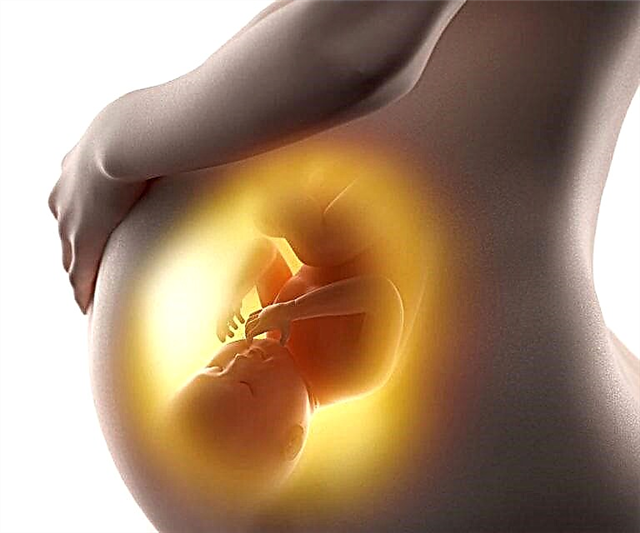Caring for the baby's health lies on the shoulders of his parents. They must respond appropriately to any problem, including knowing what to do if a child's eyes are festering.

Newborn in the arms of parents
Prevention of conjunctivitis in newborns
A disease in which the conjunctiva becomes inflamed is called conjunctivitis. Inflammation is most often accompanied by the appearance of pus. This problem occurs not only in older children, but also in newborn crumbs. Among the reasons are bacterial, viral and fungal infections received from the mother, staff in the hospital, or roommates.
Since the consequences of the disease are serious, including blindness, it is important to prevent its occurrence. Therefore, the neonatologist necessarily conducts prevention. The specialist will not forget:
- Rinse the eyes of the newborn;
- Use antibiotic drops;
- Apply antibacterial ointment under the eyelid.
All this is part of the first toilet for a newborn, carried out in the hospital immediately after the baby is born.

Neonatologist performs the first toilet of a newborn
Interesting. In rare cases, such measures are not only useless - they are also harmful. For example, if a child is allergic to albucid (a substance that treats ophthalmia), the conjunctiva will still become inflamed.
Causes of suppuration of the eyes of a newborn
Conjunctivitis manifests itself in different ways, the reasons for it are different. It:
- Damage by bacteria, most often staphylococcus or streptococcus. This problem is characterized by the abundant formation of pus. There can be so much of it that eyelashes will stick together. Hyperemia of the eye is moderate;
- Infection with viruses and infections. The most common causes are adenovirus or herpes virus. Discharge is not typical here. But the protein can blush more. And against this background, bacterial damage can occur, then pus will appear;

Adenoviral conjunctivitis
- Allergy. This conjunctivitis develops upon contact with an allergen. Here, most often there is redness of the white of the eye, profuse lacrimation, swelling of the eyelids.
If a newborn child has a festering eye, this may be due to a blockage of the lacrimal canal with a plug. The problem arises in the first weeks of a baby's life. Natural lubrication stagnates and inflammation occurs. What can be done at home to solve the problem is a massage of the nasolacrimal canal, it facilitates the release of the plug. Sometimes this does not help, then the surgeon makes a puncture.
If one eye gets sick, then soon a similar problem will appear on the other side. Conjunctivitis is highly contagious. Discharge from the organs of vision is an alarming symptom. It is important to act correctly if they appear.
Green discharge
This is a very bad sign. Green pus in the eyes of a child indicates extensive bacterial damage. There is already a strong, deep inflammation of the conjunctiva. You should immediately visit a doctor and start treatment. If therapy has already begun, but does not bring any result, you cannot wait, they call a specialist again. If the baby has barley, greenish pus may also come out of the eye.
Yellow discharge

Yellow pus from a baby's eye
If a child's eye festers, and the discharge is yellow, then this is a clear sign of bacterial conjunctivitis. Pus is usually dense, thick, when it gets from the mucous membrane to the eyelid, it dries quickly enough to a crust. On the eye itself, it can be stretched by a film that interferes with vision.
Pus is released even in the middle of sleep, not only in the corners, but also along the entire length of the eye section. Drying in the morning, it forms a dense crust. This purulent discharge is a sign of the immune system. This happens not only with inflammation of the conjunctiva, but also with fungal keratitis.
Bleeding
They speak of an acute form of inflammation of the conjunctiva or large barley. Require immediate medical attention.
Brown discharge
This is a consequence of untreated yellow discharge. Pus stagnates in the eye, takes on a different shade. An unpleasant odor may appear.
If brown pus is released primarily (that is, there was no yellow), then this is a sign of bacterial inflammation of the nasolacrimal canal. Permeability of tears is limited, stagnation occurs. The secreted pus is very thick, dark.
Discharge after sleep
There is nothing wrong with that, but provided that a tiny piece of crust appears in the morning after sleep very rarely. When there are so many crusts that it is impossible to open the eyes, this is a symptom of bacterial conjunctivitis.

The child's eyes are stuck together due to a purulent crust
If the discharge is moderate, but it appears stably every day, then this may indicate chronic inflammation of the conjunctiva. You should consult your doctor.
With a runny nose or cold
With diseases that affect the upper respiratory tract, the child's eyes may become slightly inflamed and watery. This is a normal reaction of the body to a harmful agent. White, not abundant discharge is a common symptom of ARVI or chlamydia. The latter, by the way, happens in newborns - they become infected with chlamydia from the mother when passing through the birth canal.
If the hyperemia becomes pronounced, the child is restless, then it is probably an adenovirus infection - a frequent companion of colds. If the eye is festering, then a bacterial infection has occurred.
According to Dr. Komarovsky, in general, all inflammations of the conjunctiva are associated with respiratory diseases, snot and a red throat. For the problem to be only in terms of ophthalmology and not concern anything else - a rarity, according to him.
Other symptoms
With conjunctivitis, the child's eyes often fester, but this is not the only symptom of the disease. Here's what else it comes with:
- Hyperemia (red white of the eye and skin of the eyelids);
- Feeling of "sand" under the eyelids (a parent can understand this by the anxiety of the baby);
- Itching (the baby is capricious a lot, it subsides a little if you gently rub his eye; older children rub them with their hands on their own);
- Photophobia;
- Eyelids may swell, swell;

Example of eyelid edema
- Lachrymation;
- Increased body temperature.
What complications can there be?
If the pus in the eyes of the child is not removed, there is no way to treat the baby, this can lead to the development of the following complications:
- Blepharitis This is when the inside of the eyelid (its mucous membrane is there) becomes inflamed. The problem is dangerous because it is difficult to treat, but it quickly becomes chronic.
- Keratitis. Most dangerous likely consequence. This is an inflammation of the cornea of the eye. It is difficult to cure it, keratitis often turns into a chronic disease. Then he threatens with complete loss of vision.
- Entropion. Turning the eyelids inward. This violates the natural defense of a person against harmful agents: viruses, bacteria, infections. Consequently, the child begins to get sick more often.
- Hypopyon. Purulent discharge accumulates in the eye, it is impossible to clean it out on your own. Often, only surgery can solve the problem.
- Xerophthalmia. This is a disease in which the lacrimal gland suffers. As a result, the eye is less moisturized, bacteria and viruses are more likely to sit on the overdried mucous membrane.
Which doctor treats it
Eyes are treated by an ophthalmologist, there is his office in the children's clinic. Since the appointment there is usually scheduled for a week (or even two) in advance, you can visit the pediatrician on duty and ask him to redirect the little patient to a specialized specialist or go to the hospital.

Ophthalmologist examination
Since conjunctivitis is contagious, the above methods are possible only when an ophthalmologist's consultation is urgently needed. If the discharge has just appeared, and there are few of them, you can call the pediatrician at home, he will prescribe primary treatment. Perhaps it will be enough and the baby will recover. After the examination, the doctor will tell the parents everything: how to wash the eyes, what to drip.
Attention! It is impossible to treat even a newborn, even a baby 1.5 years old with folk, home remedies. Therapy can only be prescribed by a doctor.
Tips for preventing conjunctivitis
Conjunctivitis, like many other diseases, is easier to prevent than to cure. Why you need to follow the rules of prevention, especially since they are very simple:
- Observe hygiene. The skin can carry bacteria that cause inflammation in the eyes. Be sure to wash your hands before picking up your baby.
- Observe cleanliness. Dirty bed linen, clothes - all this can cause eye infection.
- Strengthen immunity. For a newborn baby, these are massages and gymnastics, soft hardening, walks in the fresh air.
- Avoid crowded places during the months of seasonal high incidence of SARS and influenza. You do not need to sit with a newborn at home all the time, but when many people around are sick, walking in a shopping center or a crowded square is dangerous. Better to be patient and take a walk somewhere else where there are fewer people.

Mom walks with a stroller in the park
- Monitor the sleep and wakefulness of the baby. When overworked, the mucous membrane of the eye can dry out. Viruses, infections and bacteria sit on it more easily.
- Do not put foreign liquids, breast milk, for example, into the baby's eyes. This is baby food, not medicine. On the mucous membrane of the organs of vision, it creates a favorable environment for bacterial growth.
- From infancy, teach a child to wash their hands, do not rub their eyes and do not bite their nails. Such actions should not be allowed, they must be stopped immediately.
- Visiting an ophthalmologist is scheduled. They go to him with a one-month-old baby. Further visits are scheduled individually.
- Do not postpone the visit to the doctor. Serious complications occur if the eyes are left untreated. Their consequences will affect the entire future life of the baby. That is why you cannot self-medicate, you need to contact a specialist.
Mom and Dad are the guarantors of the baby's health. The future of the child depends on them. Therefore, they need to take eye diseases extremely seriously.



